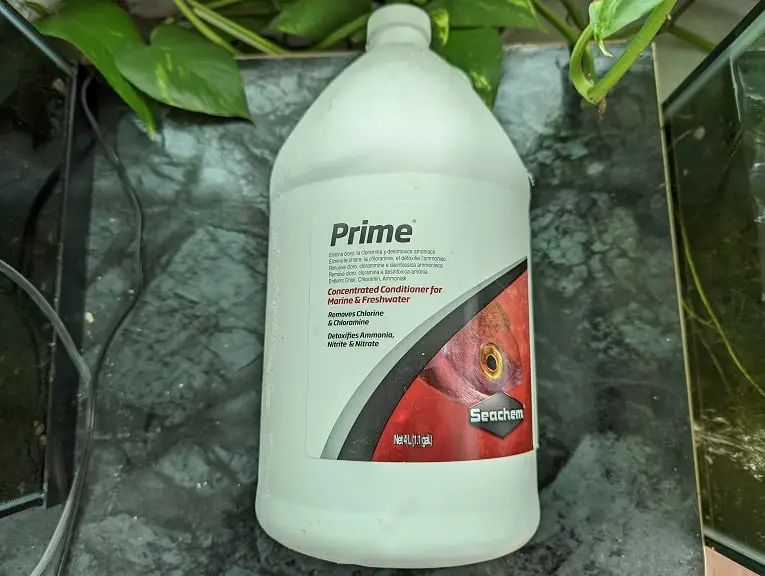Seachem Stability can be used to fishless cycle your aquarium very quickly. To find out how to properly do so, you can take a look at this tutorial at Aquarium Blueprints.
What is Seachem Stability?
Seachem Stability contains beneficial bacteria that are in a spore state. Once they are added to your tank water, these beneficial bacteria will become active and will start attaching themselves on the surface areas in your aquarium.
The beneficial bacteria will keep your waters healthy as they will reduce ammonia, nitrites and nitrates.
Seachem Stability Requirements
Before you start, we recommend that you have the following products ready to make sure you get the most out of using Stability to fishless cycle your tank:
First off, we recommend adding a product like Seachem Matrix in your filter. With this and other similar products, you will be able to grow the beneficial bacteria species that will consume nitrates. This type can only live in surface areas that are devoid of oxygen. If you have substrate that is deeper than 2 inches, then these bacteria should be able to live deep below it as well.
We also recommend having a source of ammonia. The most convenient way to do so is to simply add a small pinch of fish food to your tank daily during the cycling process.
You should also get an aquarium test kit that will test for ammonia, nitrites and nitrates. If you are using tap water during water changes, then we suggest getting Seachem Prime as well.

How to use Stability to speed up fishless cycling
In order to use Seachem Stability to make the fishless cycling process a lot quicker, we recommend that you take the following steps:
1. Set up your fish tank and fill it with water if you have done so already.
If you are filling your tank with tap water, then make sure you use a water conditioner like Seachem Prime to remove the chlorine and chloramine.
2. Next, make sure that you turn off your UV and/or ozone equipment if you are using these in your fish tank.
3. We also recommend turning up the temperature to a range of 80°F to 87°F (or 27°C to 30°C). The warmer temperatures will make the beneficial bacteria mature and then reproduce a lot faster.
4. Next, you need to add a small pinch of fish food.
5. You then then add Seachem Stability.
For the first dose, make sure you add 5 mL of the solution, which is a capful, for every 10 gallons (or 40 liters) of tank water.
6. Over the next 6 days, continue to add a small pinch of fish food and then dose Seachem Stability.
For subsequent dosages of Stability, you can add 2.5 mL, which is half of a capful, for every 10 gallons (or 40 liters) of tank water.
7. On the 8th day, you an aquarium water test kit to test your tank water for ammonia, nitrites and nitrates.
If your waters have 0 ppm of ammonia, 0 ppm of nitrites and less than 20 ppm of nitrates, then it should be considered cycled.
If you are more than 0 ppm of ammonia and/or nitrates, then you should keep the cycling process going by adding a small pinch of food and dosing Stability daily until you no longer get traces of these two compounds.
If you have 0 ppm of ammonia, 0 ppm of nitrites but more than 20 ppm of nitrates, then you can do a major water change to reduce the nitrate levels to below 20 ppm. After the water change, your tank should be considered to be fully cycled.
To find out whether or not Stability contains any ammonia, you can read through this article.
